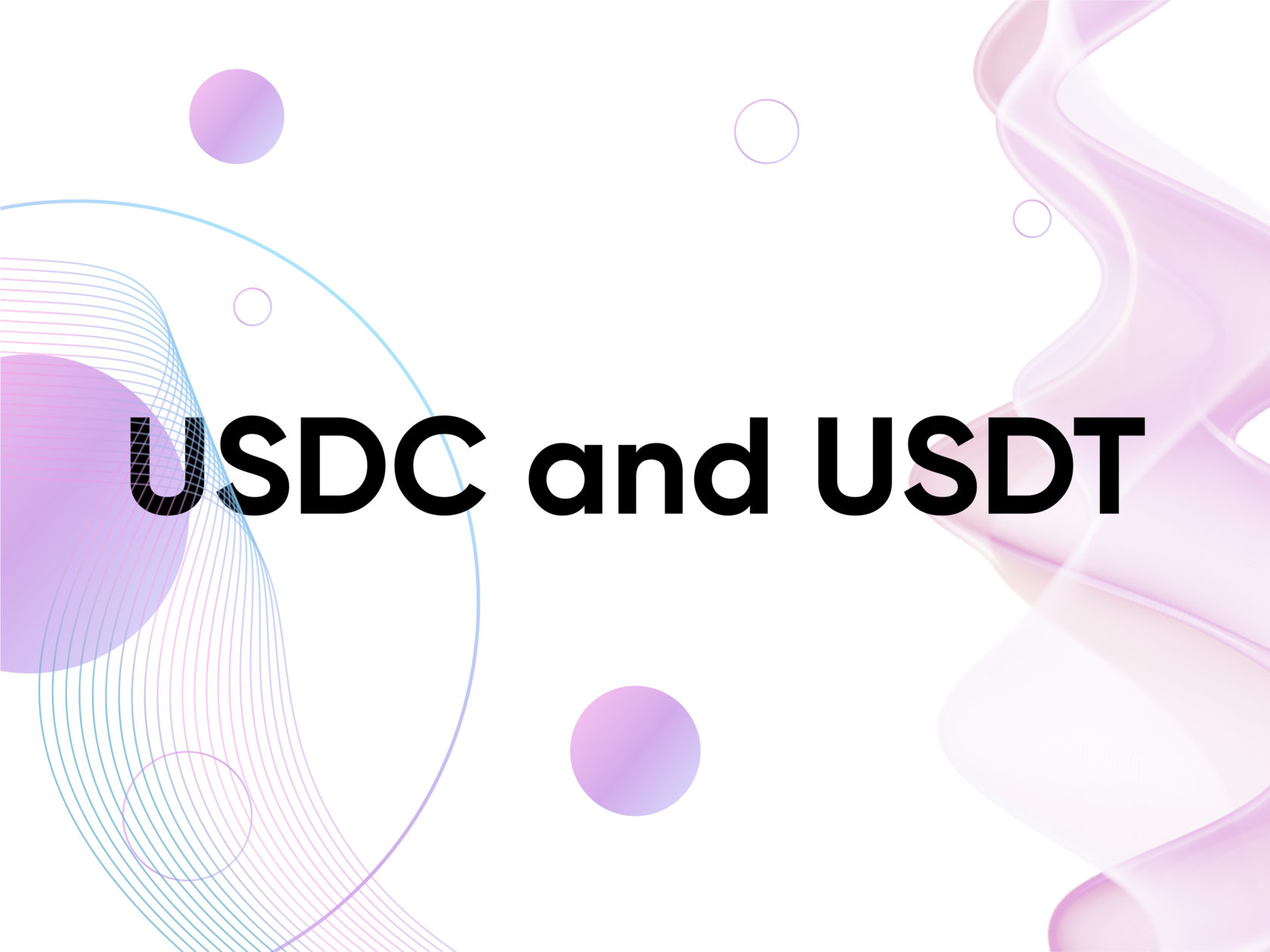USDC and USDT are both Stablecoins whose exchange rate is pegged to the U.S. dollar exchange rate. Both coins are among the top 5 cryptocurrencies by market capitalization and follow each other.
What is a Stablecoin?
Stablecoin is a cryptocurrency whose exchange rate is tied to some real asset that can be traded on an exchange, such as the U.S. dollar, euro, gold, cryptocurrency, or not tied to anything.
The ratio of a stablecoin to the asset to which it is pegged is 1:1. It turns out that the rate of one stablecoin will be equal to the rate of the asset it is backed by. For example, the exchange rate of a stablecoin to the USD fluctuates around $1.
You can also demand the asset that serves as its collateral to be given to you for each coin. For example, you can exchange each USDT for $1.
USDT
Tether's USDT Stablecoin appeared in 2015. More specifically, it appeared back in 2014 as part of the Realcoin project by Brock Pierce, Craig Sellar, and Reeve Collins. At the time, the cryptocurrency also had the name Realcoin. In late 2014 a rebranding took place and in 2015 Tether (USDT) began to appear on exchanges.
Tether became the first blockchain platform that greatly simplified the digital use of fiat currencies and democratized cross-border transactions using blockchain. USDT has long ranked third among cryptocurrencies by market capitalization.
Tether was originally based on the bitcoin blockchain. That is, the original version of USDT has the stability and security inherent in bitcoin. Later, Tether was launched on the Ethereum network. Here, USDT is an ERC20 token. This made Tether available for Ethereum smart contracts and decentralized applications on this blockchain.
Just like any other known cryptocurrency, USDT can also be exchanged from fiat, for example, you can purchase USDT in your personal Connectee wallet.
How does USDT work?
The USDT/USD exchange rate is almost always $1. There may be slight fluctuations in the price. Sometimes Tether burns tokens to reduce the number of unredeemed tokens in a particular blockchain. Unredeemed tokens appear, for example, if a customer redeems its assets in USDT for fiat currency. Such redeemed and returned tokens can also be stored in the Tether treasury. At the same time, they are not in circulation, i.e. are not included in the calculation of market capitalization. They can be issued in the future in the event of new market demand.
The main disadvantage of stablecoin is that it is centralized, which is understandable because the token is backed by reserves consisting of real, not digital, assets, including the U.S. dollar. Tether has full control over the issuance and collateralization of USDT.
USDC
USD Coin or USDC is a Stablecoin that is pegged to the U.S. dollar exchange rate, meaning the USDC/USD exchange rate is always $1 (small deviations are possible). USDC was launched in 2018 by the Centre consortium founded by Coinbase and Circle.
How does USDC work?
The process for creating and burning USDC is as follows. If a company wants to exchange USD for USDC, it can open an account at Circle. After depositing funds in dollars, Circle mints USDC coins and sends an amount equivalent to the dollar amount to the company's account. This creates new USD Coin tokens in circulation.
If a company wants to exchange USDC to USD, it now deposits USDC into its account, and Circle pays it the amount in USD. At the same time, the USDC coins are burned, that is, they are taken out of circulation.
If USD is exchanged for USDC on the cryptocurrency exchange, the exchange makes the exchange using its balance. If it needs more USDC, it will use its Circle account and purchase new USDC tokens.
